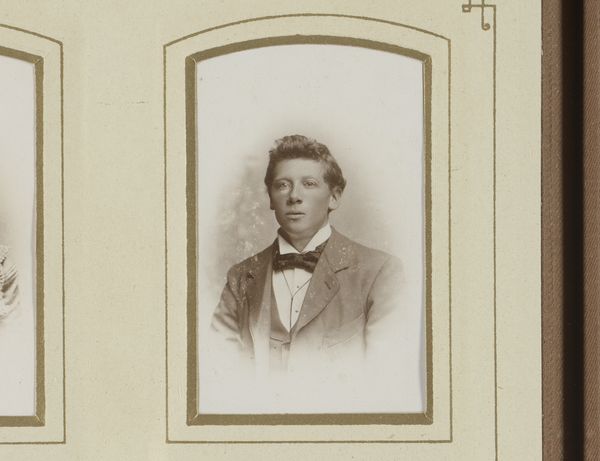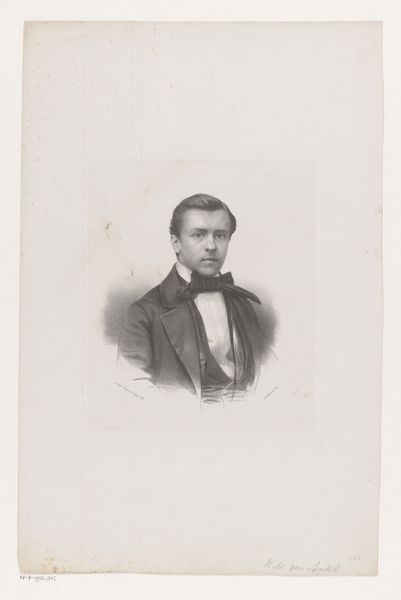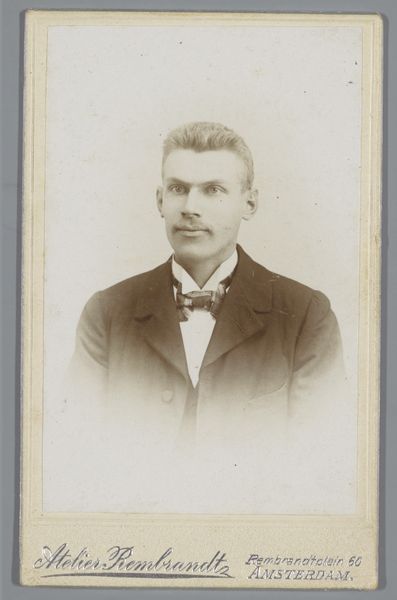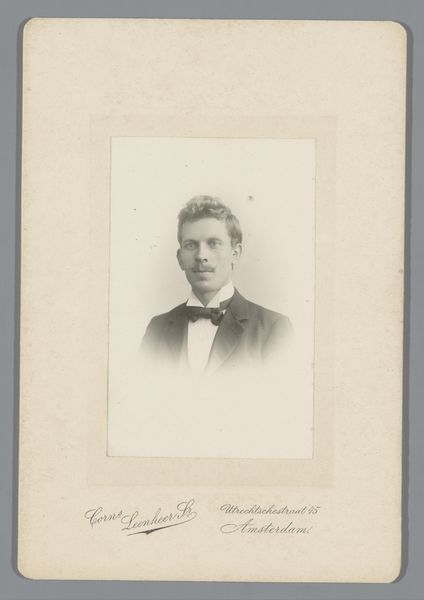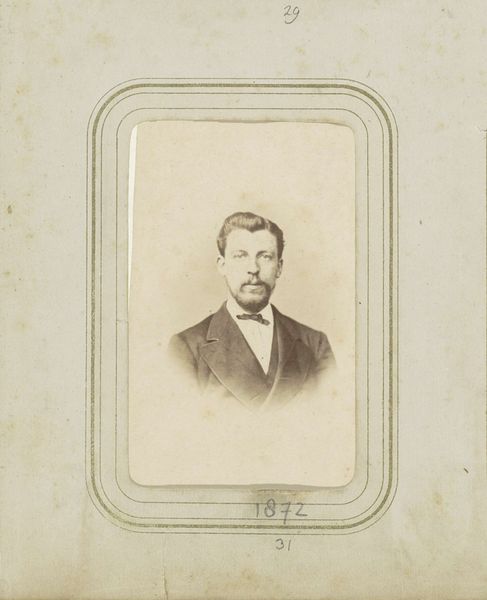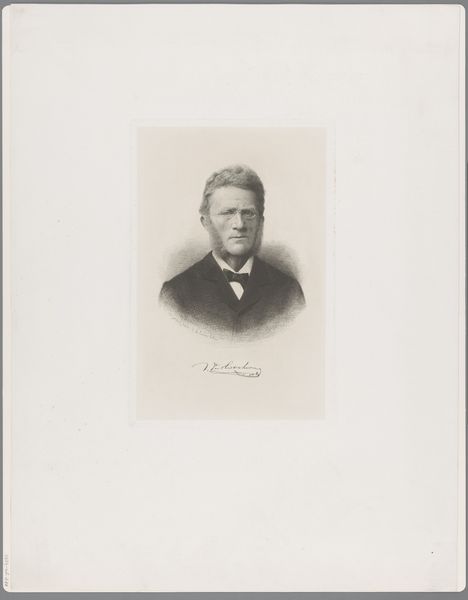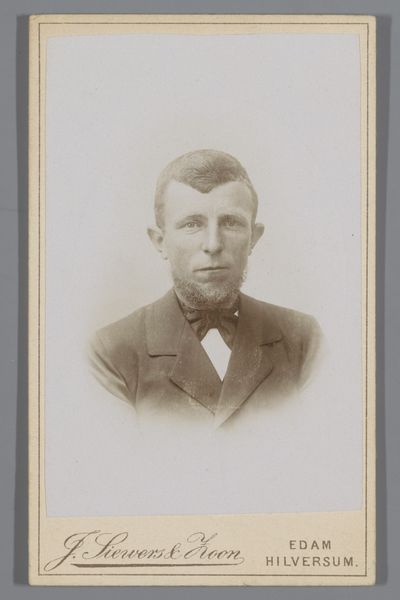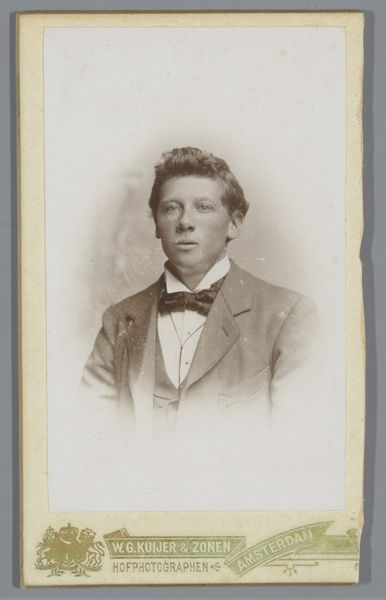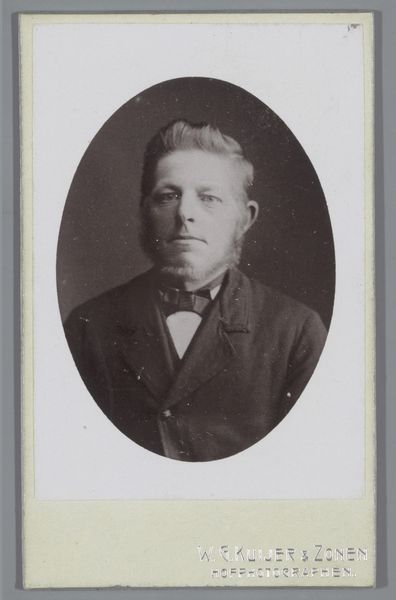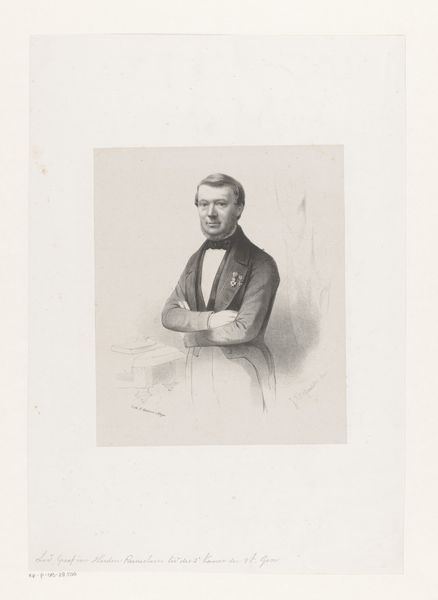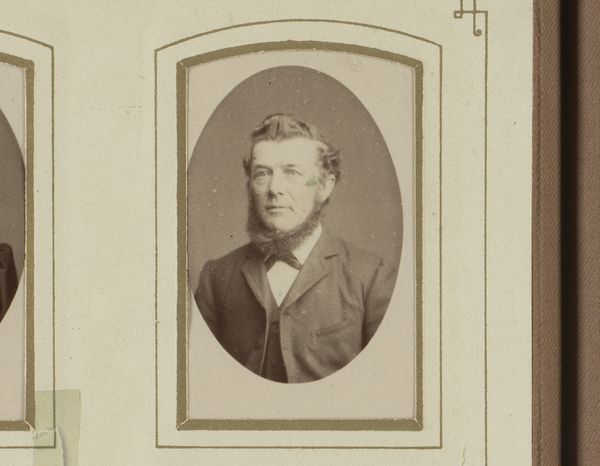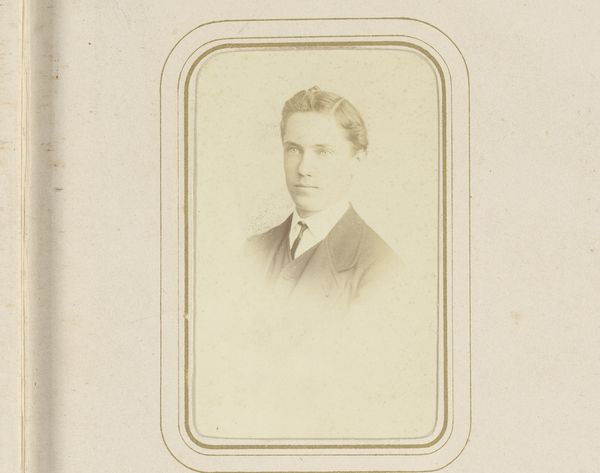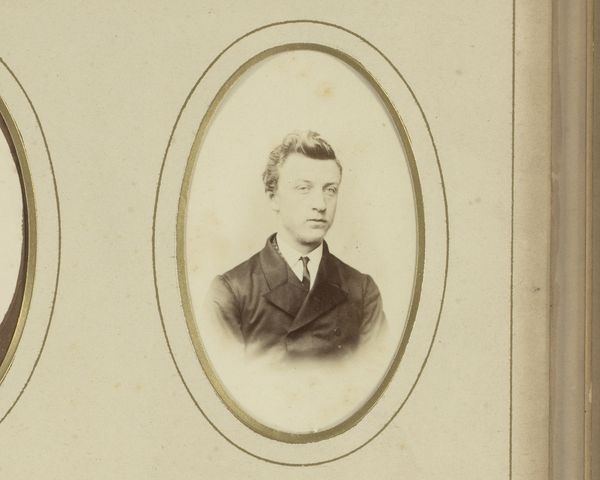
drawing, pencil
#
portrait
#
pencil drawn
#
drawing
#
pencil sketch
#
pencil drawing
#
pencil
#
portrait drawing
#
academic-art
#
realism
Dimensions: height 124 mm, width 86 mm
Copyright: Rijks Museum: Open Domain
Curator: I'm immediately drawn to the formality, that severe stare. It reminds me of photographic portraiture emerging in the mid-19th century. Editor: Indeed, a commanding presence, though perhaps a bit subdued. Let's delve into "Portret van G. van der Veken," a pencil drawing dating back to 1882. Knowing this was produced at a time when photographic portraits began gaining popularity gives additional layers of context. Curator: Absolutely, that historical moment is crucial. We see how drawing adapts, emulating the clarity and detail afforded by the camera but with a unique handcrafted touch. I wonder what Van der Veken's class status and identity was, considering his stern gaze and tailored suit. It's very buttoned-up. Editor: Socially and culturally, these depictions solidified the power structures and hierarchies present. Institutions of power like the burgeoning Dutch middle-class were trying to construct a very clear idea of themselves through portraiture and public life. These works become a visual arm of maintaining order, no? Curator: Certainly. It's about more than representation; it's about establishing a visual language of authority, perpetuating certain ideals. Considering Van der Veken's name inscribed just below his image, how can we interpret the artist's positioning as complicit or critique? Editor: Well, we know portraiture, then and now, served the sitter more often than it challenged norms. Even within what we read as constraints—say, academic realism in this pencil sketch—artists always negotiate between expectations, patronage, and perhaps some slight agency. It might not radically question norms, but every subtle artistic decision informs how it functions within the historical discourse on representation and its political uses. Curator: Agreed, it is an artifact loaded with potential meanings when re-contextualized today, away from its initial societal influence, asking us what of portraiture maintains to this day. The gaze of this individual has lingered long after his being and is something we get to re-examine now. Editor: A starkly serious legacy, a serious portrait of a seemingly important person. So much about how these types of individuals wanted to be perceived in the social arena. A pencil portrait opens a world of historical inquiry.
Comments
No comments
Be the first to comment and join the conversation on the ultimate creative platform.
